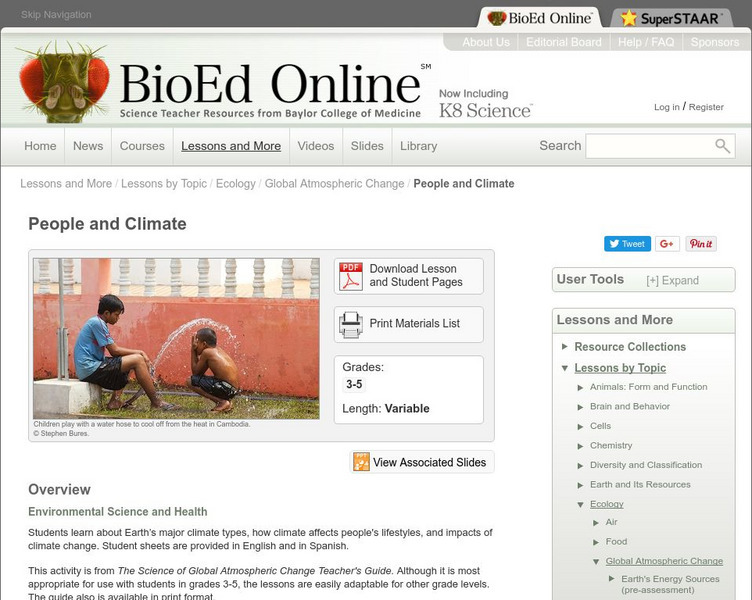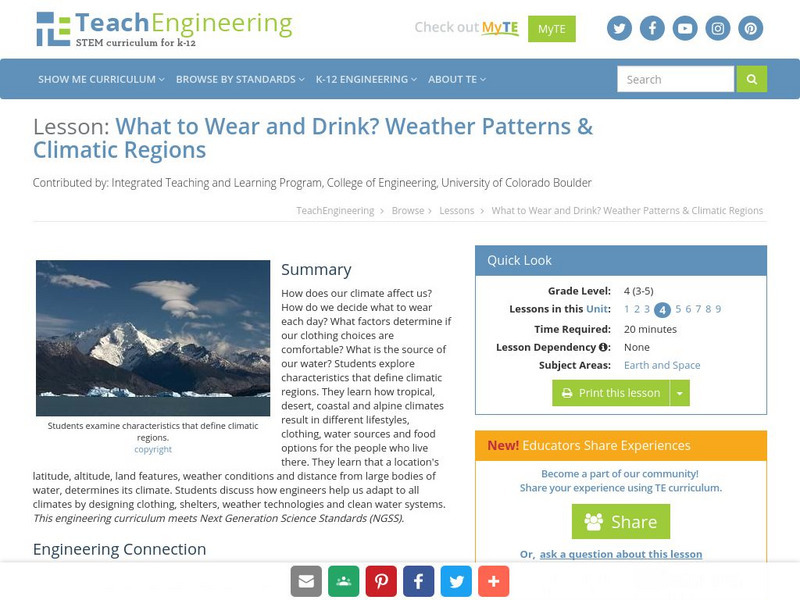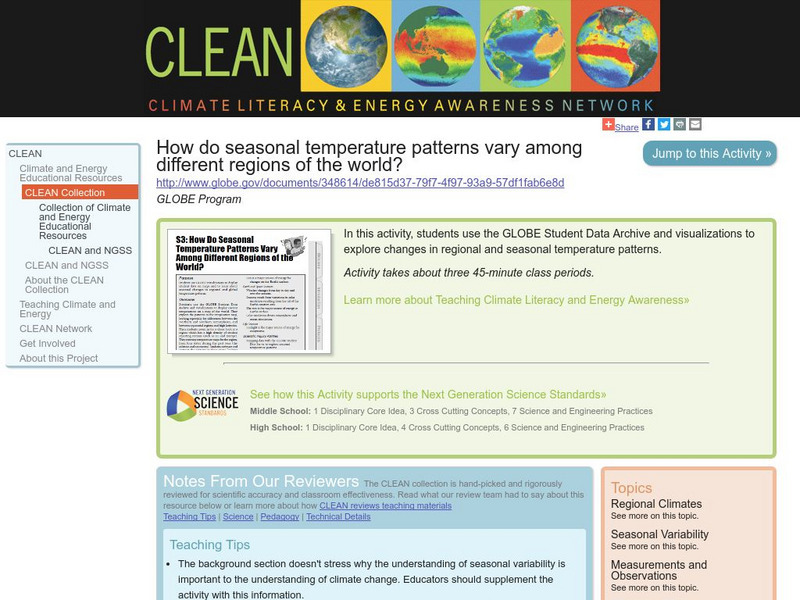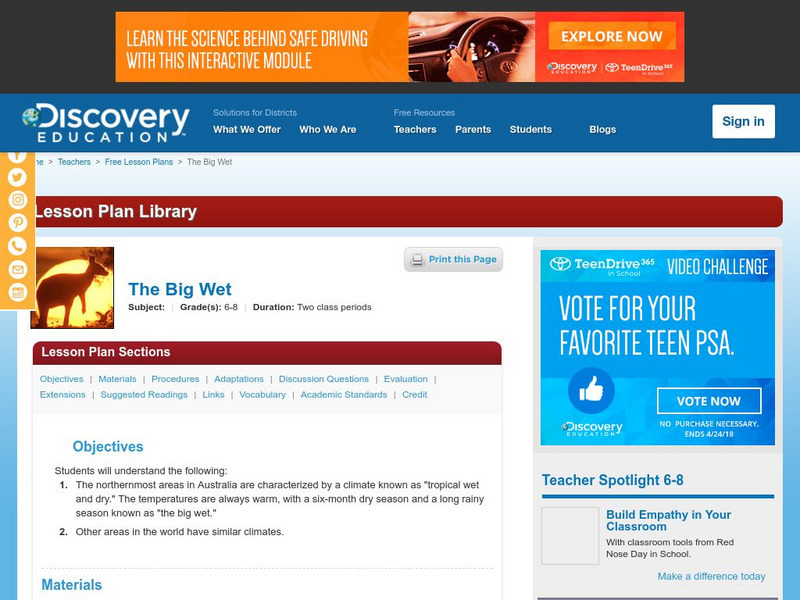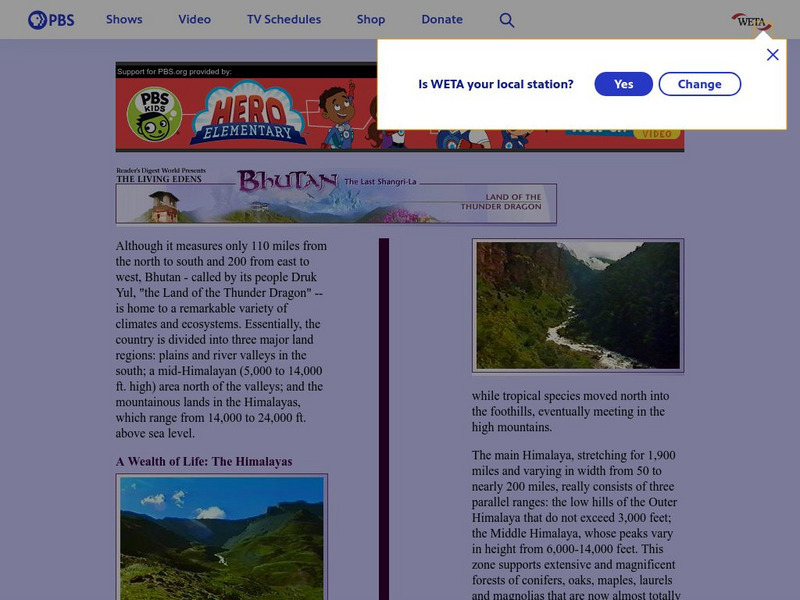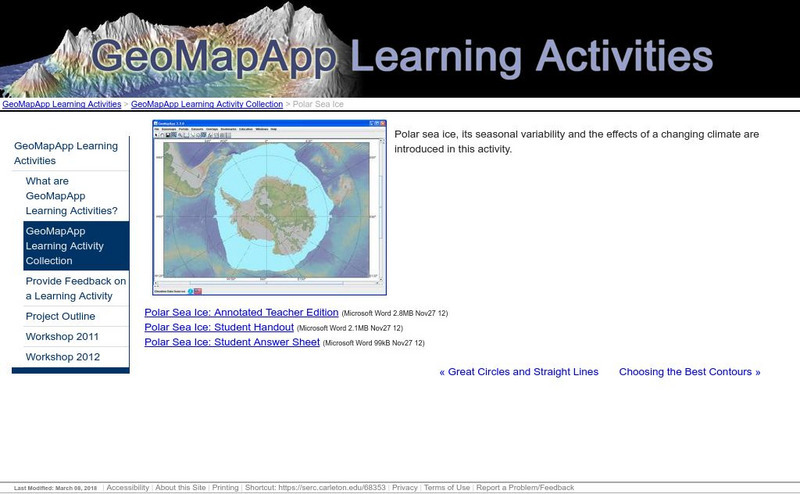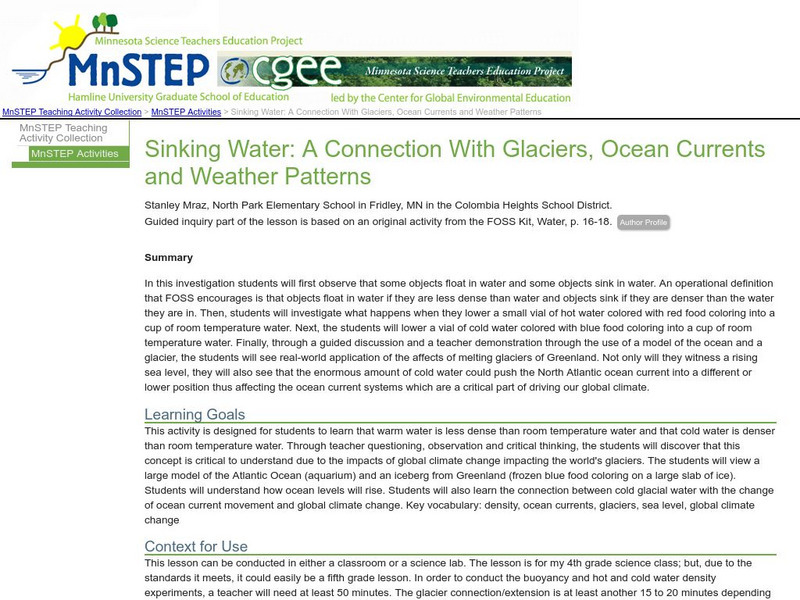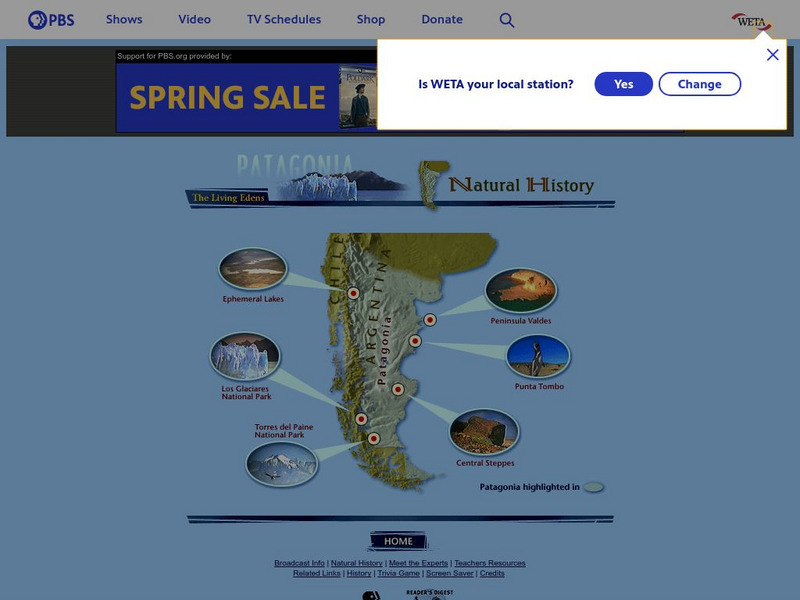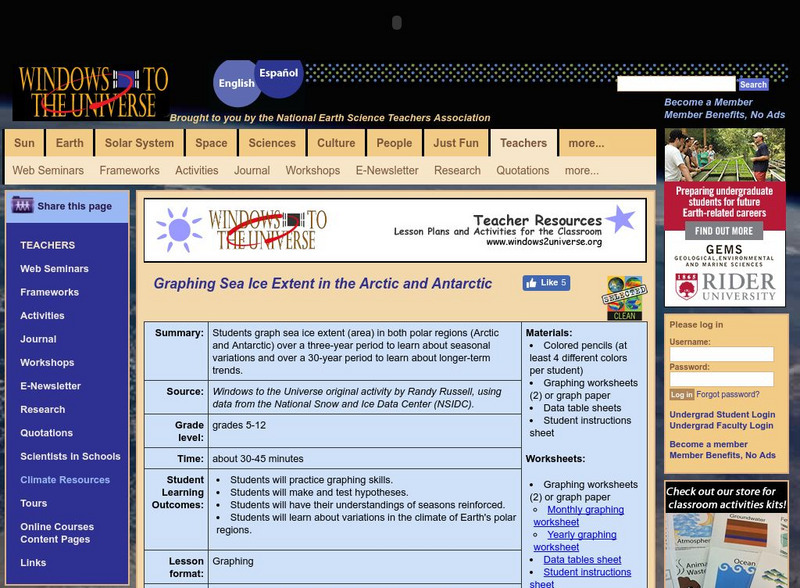BioEd Online
Bio Ed Online: The Science of Global Atmospheric Change: People and Climate
The impact that climate and climate change have on humans is explored in this lesson. Students learn about climate zones, and factors that affect climate, e.g., proximity to the ocean and greenhouse gases. The lesson and accompanying...
University Corporation for Atmospheric Research
Ucar: Climate Postcards
Students learn about the climate zones of the world by interpreting data and then identifying climate zones described in postcards.
TeachEngineering
Teach Engineering: What to Wear? What to Drink? Weather Patterns and Climatic R
How does our climate affect us? How do we decide what to wear each day? What factors determine if our clothing choices are comfortable? What is the source of our water? Learners explore characteristics that define climatic regions. They...
Science Education Resource Center at Carleton College
Serc: Exploring Regional Differences in Climate Change
Students create a set of graphs that facilitate comparison of climate change predicted for various states. They also use Microsoft Excel to create a graph showing precipitation data.
TeachEngineering
Teach Engineering: Homes for Different Climates
Students learn about some of the different climate zones in China and consider what would be appropriate design, construction and materials for houses in those areas. This prepares them to conduct the associated activity(ies) in which...
The Wonder of Science
The Wonder of Science: 3 Ess2 2: World Climates
Work samples, phenomena, assessment templates, and videos that directly address standard 3-ESS2-2: world climates.
Science Education Resource Center at Carleton College
Serc: Studying Eco Climatic Domains
After learning about the climates of different ecological regions of the United States, students investigate the impact of climate change on plants that live in those regions. By looking at changes over time, they can better understand...
Organization for Community Networks
Ofcn: The Influence of Physical Geography: Climate
In this instructional activity from the Academy Curricular Exchange of the Columbia Education Center, this instructional activity teaches students to determine the physical geography and climate of the area and how they influence the...
Climate Literacy
Clean: Seasonal Temperature Pattern Variation in Different Regions of the World
Students use GLOBE climate science visualizations to display student data on maps and to learn about seasonal changes in regional and global temperature patterns.
Climate Literacy
Clean: A Global Issue: The Impacts of Climate Change
This is lesson five of a 9-lesson module. Activity explores the effects of climate change on different parts of the Earth system and on human well-being: polar regions, coral reefs, disease vectors, extreme weather, and biodiversity.
Climate Literacy
Clean: Introduction to Earth's Climate
This activity is an introduction to Earth's climate and covers key principles regarding Earth's unique climate, atmosphere, and regional and temporal climate differences. Students will gain an understanding of how the weather and climate...
Discovery Education
Discovery Education: The Big Wet
This lesson plan surveys the climate of Australia and compares it to the climate of other regions around the world.
Science Education Resource Center at Carleton College
Serc: Arctic Climate Curriculum, Activity 3: Exploring Arctic Climate Data
Students dig into authentic Arctic climate data to unravel some causes and effects related to the seasonal melting of the snowpack. In particular, students learn about albedo and its relationship to snowmelt. This concept applied to...
PBS
Pbs Bhutan & the Himalayas: A Wealth of Life
PBS provides a general overview of the geography of Bhutan and the Himalayas, highlighting Bhutan's natural regions as largely unexplored. Includes linked pages to the various climatic zones of the Himalayan region.
Discovery Education
Discovery Education: Africa Its People and Places
A very comprehensive lesson plan that helps prepare students for a trip to Africa taking into consideration climate, customs, geography, and language.
Science Education Resource Center at Carleton College
Serc: Polar Sea Ice
Polar sea ice, its seasonal variability, and the impact of a changing climate are investigated in this activity. Students will also explore the differences between polar regions that result from Antarctica being a continent and the north...
Science Education Resource Center at Carleton College
Serc: Arctic Climate Curriculum, Activity 1: Exploring the Arctic
This activity introduces students to the Arctic, including different definitions of the Arctic and exploration of the Arctic environment and Arctic people. Students set out on a virtual exploration of the geography of the Arctic using...
Science Education Resource Center at Carleton College
Serc: Mn Step: Sinking Water: Glaciers, Ocean Currents and Weather Patterns
A lesson where students learn how warm water is less dense than cold water, and what this means for global climate change as ice from the polar regions melts. Students will do experiments in buoyancy and water density when hot or cold,...
PBS
Pbs: The Living Edens/patagonia/natural History
This site lets you click on six different spots in the Patagonian region of Argentina to learn about the physical geography. For each area, a description is given along with information on conservation efforts.
Climate Literacy
Clean: Carbon Cycle Game
In this interactive, regionally-relevant carbon cycle game, students are challenged to understand the role of carbon in global climate change. They imagine that they are carbon molecules and travel via different processes through carbon...
National Earth Science Teachers Association
Windows to the Universe: Graphing the Extent of Sea Ice in Arctic and Antarctic
Students graph sea ice extent in both polar regions over a three-year period to learn about seasonal variations, and over a 30-year period to learn about longer-term trends.
Science Education Resource Center at Carleton College
Serc: From Grid to Home
Students analyze energy use, cost, and source patterns from household to regional scales and relate these patterns to CO2 emissions.
Other
My Science Box: Ecosystem Organization
In this instructional activity, students will learn about the different levels in the hierarchy of ecology and explain the relationships: organism, population, community, ecosystem, biome, and biosphere. They will also discover why...
PBS
Pbs Learning Media: North American Monsoon
NASA tracked rainfall and soil moisture for a three-month period in 1993 to confirm that these rain patterns were indeed a monsoon. Watch this animation to see the relationship between soil moisture and rainfall in the Southwest U.S. By...
